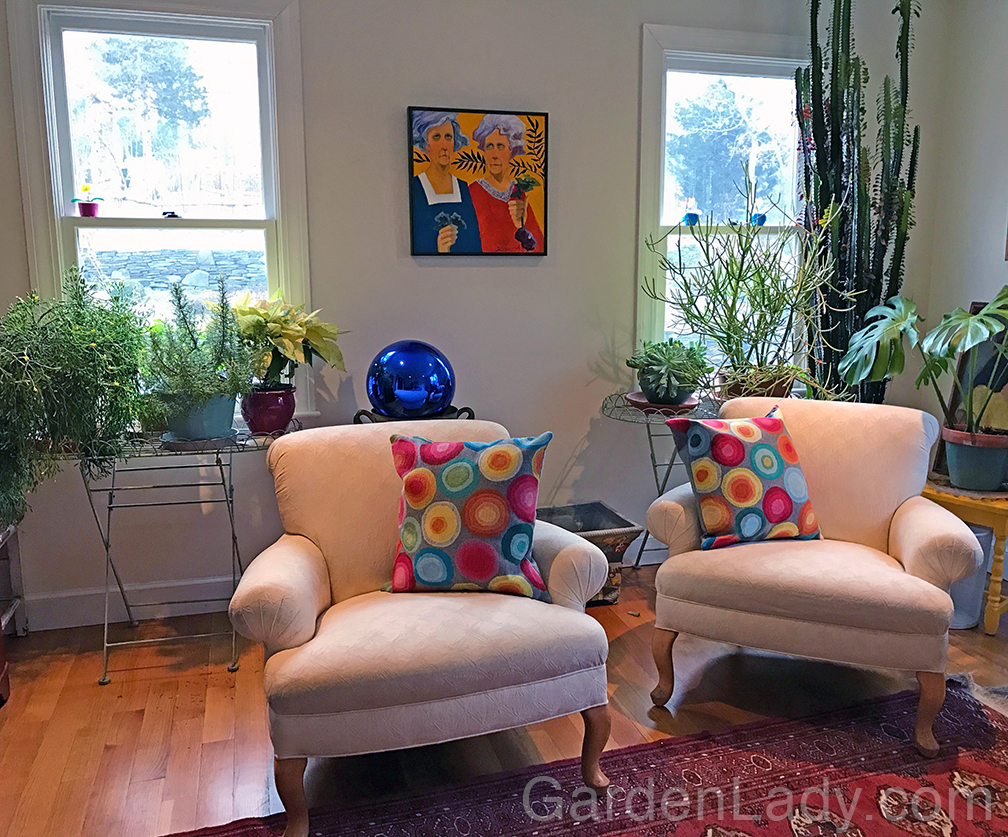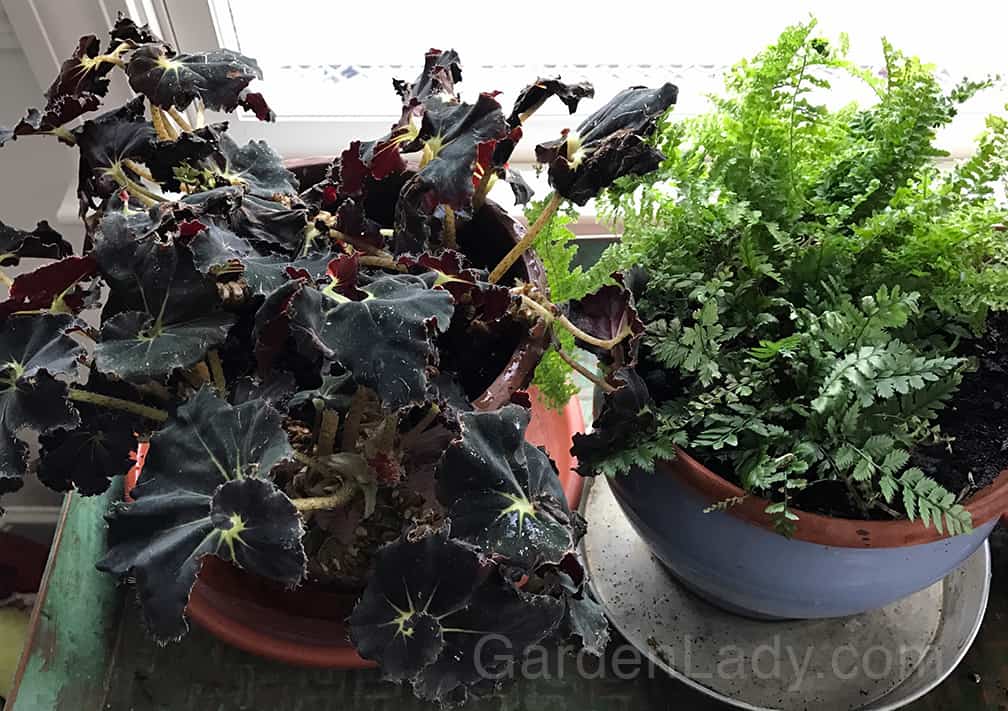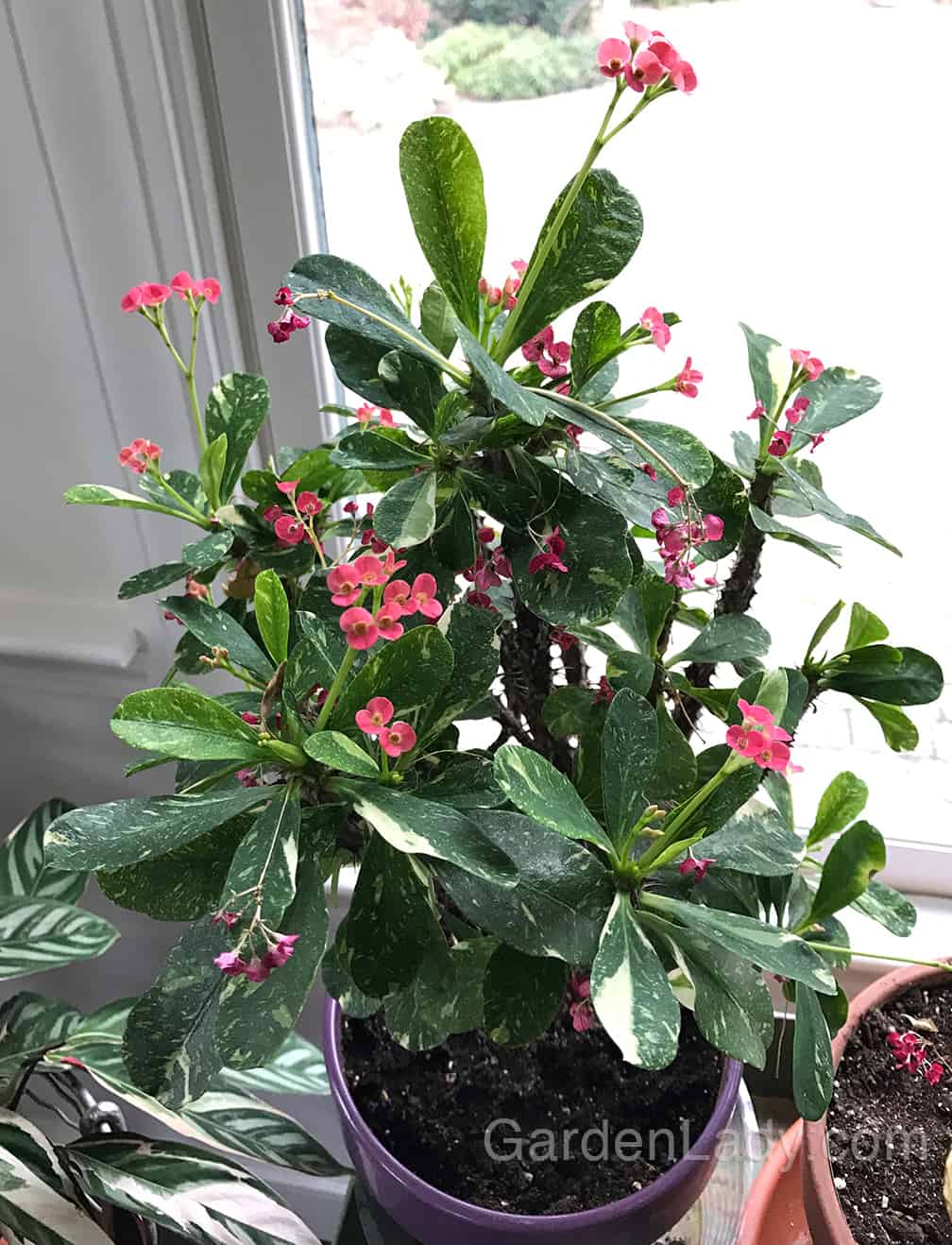I think that one way to make a house instantly more cheerful is to have as many pots of indoor greenery, aka houseplants, as possible. If you’ve been shy about growing or over-wintering plants indoors, or if you believe that you kill every houseplant you own, here are some tips for success.

I took the color palette for this room from the painting by DE Weed. My mother bought this for me, knowing that I’d like the garden theme. She loved the humor in the title, “I Don’t Give A Damn If It’s Not Organic.” But the colorful room is made more pleasant and cheerful by the plants.
- Most indoor plant failures are due to too much or too little water. Be sure that every plant you are growing is in a pot with a drainage hole. If it’s placed in a decorative container that doesn’t have a hole, such as the white Poinsettia in the photo above, be sure to take it out of that container and empty the overflow out shortly after watering. When you water your plants, don’t just give them a little bit. Water the plant well and let the excess come out into a saucer. After an hour, sop up any remaining water the plant hasn’t drawn up into the soil. (I use an old bath towel but some use a turkey baster.)

Make sure the saucer you have under an indoor plant is large enough to hold a good amount of run-off. If your saucer isn’t large enough you will be stingy with the water and the plant won’t get well hydrated.
2. Match the houseplant with the light it will grow best in. Some plants (succulents, crown-of-thorns, geraniums and herbs) need the full, bright sun of a south-facing window. Others (peace lily, ferns, African violets and begonias) want bright light but not too much direct sun. An eastern or bright northern window is best for these.

This begonia and fern are very happy in a northern window in a bright kitchen. They get just a bit of eastern sun from another window nearby.
3. Be sure your plant is in an appropriate pot. Not too big and not too small. If you’ve had the plant for over a year, chances are it needs to be moved up into the next sized container. Use a good quality potting soil and don’t put rocks or shards in the bottom of the pots! (For more information on this, get my book, Coffee for Roses.)

This variegated crown of thorns (Euphorbia milii) is happy in a sunny window. Like many of my houseplants, it gets sent to “summer camp” outdoors in the warmer months. It also gets fertilized regularly.
4. Fertilize most indoor greenery about three times a year: February, May and August. Or use a liquid fertilizer in February and a time-release fertilizer in May. When you repot, you can add a small handful of an organic fertilizer such as Plant-tone.
For a liquid feed I’ve recently been using Maxsea 16-16-16 and like the results very much.
5. Watch your plants for signs of insects. If they, or the floor/table under them, feels sticky there is a sucking insect at work. Although you can treat with insecticidal soap or other products, unless the plant has sentimental or historical value, don’t be afraid to toss a badly infested plant into the compost. It’s a houseplant, and it’s OK to say “Thanks for coming….bye!”
Finally, here’s a suggestion for those who over or under water plants. If you’re prone to overwatering, get a peace lily. If you tend to forget about watering for a couple of weeks at a time, buy succulents.


Love the inviting room ! Thanks for the refresher just bought an ice plant yesterday . This garden center transported me right spring with little birds flying about turtles wading in a pond just lovely made my heart skip a beat ! Happy New Year !
I like your spark!
Some amazing looking plants. Keep up the good work.. Great post!